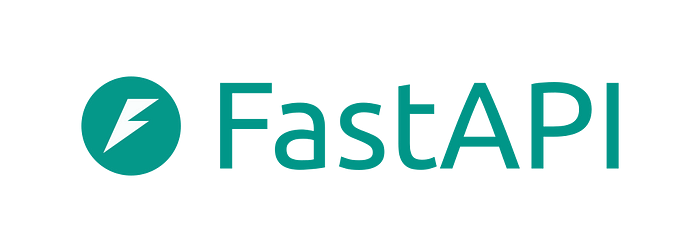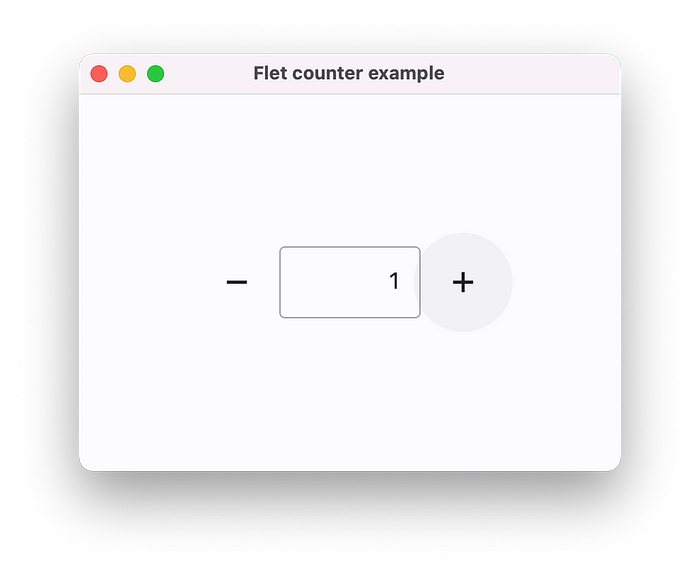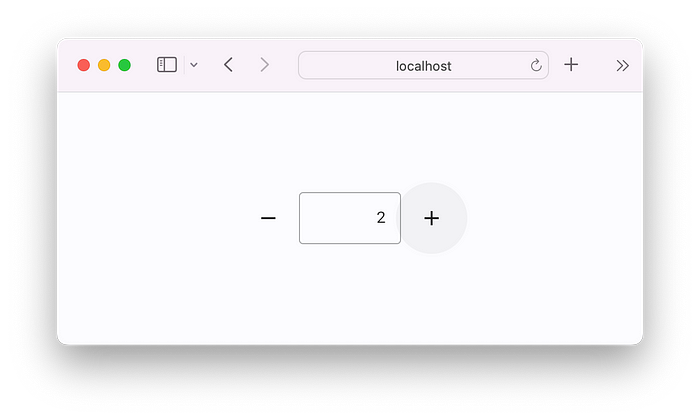In 2025, build various powerful applications with these 15 Python libraries.


In the technical ecosystem of Python, the rich and diverse libraries are a major highlight, greatly expanding the application boundaries of Python and serving as “power tools” that change the programming landscape. As technology iterates rapidly, there are several transformative modern libraries that should not be missed to gain an edge in the programming field of 2025.
1 Polars – Ultra-Fast DataFrame Library
Polars is an ultra-fast DataFrame library written in Rust for processing structured data.

Advantages: Polars is 10 to 100 times faster than Pandas. It supports lazy evaluation on large datasets and can natively cooperate with Apache Arrow.
Documentation: https://docs.pola.rs/
Installation:
pip install polars
Example: Here is a simple example of creating a DataFrame using Polars:
import polars as pl
import datetime as dt
df = pl.DataFrame(
{
"name": ["Alice Archer", "Ben Brown", "Chloe Cooper", "Daniel Donovan"],
"birthdate": [
dt.date(1997, 1, 10),
dt.date(1985, 2, 15),
dt.date(1983, 3, 22),
dt.date(1981, 4, 30),
],
"weight": [57.9, 72.5, 53.6, 83.1], # (kg)
"height": [1.56, 1.77, 1.65, 1.75], # (m)
}
)
print(df)
Output:
shape: (4, 4)
┌────────────────┬────────────┬────────┬────────┐
│ name ┆ birthdate ┆ weight ┆ height │
│ --- ┆ --- ┆ --- ┆ --- │
│ str ┆ date ┆ f64 ┆ f64 │
╞════════════════╪════════════╪════════╪════════╡
│ Alice Archer ┆ 1997-01-10 ┆ 57.9 ┆ 1.56 │
│ Ben Brown ┆ 1985-02-15 ┆ 72.5 ┆ 1.77 │
│ Chloe Cooper ┆ 1983-03-22 ┆ 53.6 ┆ 1.65 │
│ Daniel Donovan ┆ 1981-04-30 ┆ 83.1 ┆ 1.75 │
└────────────────┴────────────┴────────┴────────┘
2 Ruff – The Fastest Python Formatter and Linter
Ruff is an ultra-fast linter written in Rust, designed to replace traditional tools like Flake8, Black, and isort with a single powerful tool, providing developers with a more efficient and convenient solution for code checking and formatting.

Advantages: It is 20 times faster than Flake8, supports automatic problem fixing, and combines formatting and code checking functionalities.
Documentation: https://docs.astral.sh/ruff/
Installation:
pip install ruff
Example: We can initialize a project using<span>uv</span>:
uv init --lib demo
This command will create a Python project with the following structure:
demo
├── README.md
├── pyproject.toml
└── src
└── demo
├── __init__.py
└── py.typed
Then, replace the content of<span>src/demo/__init__.py</span> with the following code:
from typing import Iterable
import os
def sum_even_numbers(numbers: Iterable[int]) -> int:
"""Given an iterable of integers, return the sum of all even numbers."""
return sum(
num for num in numbers
if num % 2 == 0
)
Next, add Ruff to the project:
uv add --dev ruff
Then, you can run Ruff code checking on the project with:
$ uv run ruff check
src/numbers/__init__.py:3:8: F401 [*] `os` imported but unused
Found 1 error.
[*] 1 fixable with the `--fix` option.
Automatically resolve this issue by running<span>ruff check --fix</span>:
$ uv run ruff check --fix
Found 1 error (1 fixed, 0 remaining).
3 PyScript – Run Python in the Browser
PyScript allows developers to write and execute Python code in the browser, similar to JavaScript.
Advantages: PyScript supports the development of web applications based on Python, which can be used directly in HTML without a backend.
Documentation: https://docs.pyscript.net/2025.2.4/
Installation: No installation is required for PyScript, just add a<span><script></span> and link tag in the<span><head></span> of your HTML document.
<!-- PyScript CSS -->
<link rel="stylesheet" href="https://pyscript.net/releases/2025.2.4/core.css">
<!-- This script tag is used to start PyScript -->
<script type="module" src="https://pyscript.net/releases/2025.2.4/core.js"></script>
Example: Create a simple<span>.html</span> file and write Python code using the<span><py-script></span> tag.
<!doctype html>
<html>
<head>
<!-- Recommended meta tags -->
<meta charset="UTF-8">
<meta name="viewport" content="width=device-width,initial-scale=1.0">
<!-- PyScript CSS -->
<link rel="stylesheet" href="https://pyscript.net/releases/2025.2.4/core.css">
<!-- This script tag is used to start PyScript -->
<script type="module" src="https://pyscript.net/releases/2025.2.4/core.js"></script>
</head>
<body>
<!-- Now you can write Python code inside the <py-script> tag -->
<py-script>
import sys
from pyscript import display
display(sys.version)
</py-script>
</body>
</html>
4 Pandera – Data Validation Tool for Pandas
Pandera helps validate Pandas DataFrames and Series through pattern-based validation.

Advantages: Pandera can catch data errors before data processing, working similarly to Pydantic but designed specifically for Pandas, and supports unit testing of data!
Documentation: https://pandera.readthedocs.io/en/stable/
Installation:
pip install pandera
Example:
import pandas as pd
import pandera as pa
# Data to validate
df = pd.DataFrame({
"column1": [1, 4, 0, 10, 9],
"column2": [-1.3, -1.4, -2.9, -10.1, -20.4],
"column3": ["value_1", "value_2", "value_3", "value_2", "value_1"],
})
# Define schema
schema = pa.DataFrameSchema({
"column1": pa.Column(int, checks=pa.Check.le(10)),
"column2": pa.Column(float, checks=pa.Check.lt(-1.2)),
"column3": pa.Column(str, checks=[
pa.Check.str_startswith("value_"),
# Define a custom check function that takes a series as input and outputs a boolean or boolean series
pa.Check(lambda s: s.str.split("_", expand=True).shape[1] == 2)
]),
})
validated_df = schema(df)
print(validated_df)
Output:
column1 column2 column3
0 1 -1.3 value_1
1 4 -1.4 value_2
2 0 -2.9 value_3
3 10 -10.1 value_2
4 9 -20.4 value_1
5 Textual – Build Terminal User Interface Applications with Python
Textual allows developers to build modern terminal user interface (TUI) applications using rich components in Python.
Advantages: Used to create beautiful terminal applications, can be styled with the Rich library, and requires no front-end development experience.
Documentation: https://textual.textualize.io/tutorial/
Installation:
pip install textual
Example: A simple example of creating a TUI application.
from textual.app import App, ComposeResult
from textual.widgets import Label, Button
class QuestionApp(App[str]):
def compose(self) -> ComposeResult:
yield Label("Do you love Textual?")
yield Button("Yes", id="yes", variant="primary")
yield Button("No", id="no", variant="error")
def on_button_pressed(self, event: Button.Pressed) -> None:
self.exit(event.button.id)
if __name__ == "__main__":
app = QuestionApp()
reply = app.run()
print(reply)
Running this application will yield the following result:

6 LlamaIndex – Build Custom AI Assistants
LlamaIndex simplifies the process of indexing and querying large datasets for applications based on large language models (LLMs).
Advantages: LlamaIndex is used for retrieval-augmented generation (RAG), works in conjunction with OpenAI’s GPT models, and can handle both structured and unstructured data.
Documentation: https://docs.llamaindex.ai/en/stable/#getting-started
Installation:
pip install llama-index
Example: Let’s start with a simple example, creating a file named<span>starter.py</span>:
- Set an environment variable named
<span>OPENAI_API_KEY</span>and assign it your OpenAI API key.
import asyncio
from llama_index.core.agent.workflow import AgentWorkflow
from llama_index.llms.openai import OpenAI
# Define a simple calculator tool
def multiply(a: float, b: float) -> float:
"""Function to multiply two numbers."""
return a * b
# Create an agent workflow using our calculator tool
agent = AgentWorkflow.from_tools_or_functions(
[multiply],
llm=OpenAI(model="gpt-4o-mini"),
system_prompt="You are a helpful assistant that can multiply two numbers.",
)
async def main():
# Run the agent
response = await agent.run("What is 1234 * 4567?")
print(str(response))
# Run the agent
if __name__ == "__main__":
asyncio.run(main())
Calculation result: The result of 1234×4567 is 5,678,678.
7 Robyn – The Fastest Python Web Framework
Robyn is a high-performance alternative framework to Flask and FastAPI, optimized for multi-core processing.

Advantages: Robyn is 5 times faster than FastAPI. It supports asynchronous and multithreaded operations, and speeds up with Rust.
Documentation: https://robyn.tech/documentation/en
Installation:
pip install robyn
Example: Create a simple project using the following command:
$ python -m robyn --create
This will produce the following output:
$ python3 -m robyn --create
? Directory Path:.
? Need Docker? (Y/N) Y
? Please select project type (Mongo/Postgres/Sqlalchemy/Prisma):
❯ No DB
Sqlite
Postgres
MongoDB
SqlAlchemy
Prisma
This will create a new application with the following structure:
├── src
│ ├── app.py
├── Dockerfile
Now you can write code in the<span>app.py</span> file:
from robyn import Request
@app.get("/")
async def h(request: Request) -> str:
return "Hello, world"
You can run the server with the following command:
python -m robyn app.py
8 DuckDB – Lightning-Fast In-Memory Database
DuckDB is an in-memory SQL database that is faster than SQLite for analytics.

Advantages: Extremely fast for analytics, runs without a server, and easily integrates with Pandas and Polars.
Documentation: https://duckdb.org/docs/stable/clients/python/overview.html
Installation:
pip install duckdb --upgrade
Example: A simple example using a pandas DataFrame:
import duckdb
import pandas as pd
pandas_df = pd.DataFrame({"a": [42]})
duckdb.sql("SELECT * FROM pandas_df")
Output:
┌───────┐
│ a │
│ int64 │
├───────┤
│ 42 │
└───────┘
9 Django – Full-Stack Web Framework
Django is a high-level Python web framework for quickly building secure and scalable applications.

Advantages: Django comes with built-in Object-Relational Mapping (ORM), includes an authentication system, is scalable and secure, and offers many more advantages.
Documentation: https://docs.djangoproject.com/en/5.2/
Installation:
pip install django
Example: Create a new Django project:
django-admin startproject myproject
cd myproject
python manage.py runserver
You should see the application running at<span>http:127.0.0.1:8000/</span>.
10 FastAPI – High-Performance API Framework
FastAPI is a lightweight and fast Python web framework for building asynchronous RESTful APIs.

Advantages: Built-in asynchronous support, automatic generation of OpenAPI and Swagger UI, and fast performance (built on Starlette and Pydantic).
Documentation: https://fastapi.tiangolo.com/learn/
Installation:
pip install fastapi uvicorn
Example: A simple example of creating an API with FastAPI:
# main.py
from fastapi import FastAPI
app = FastAPI()
@app.get("/")
def read_root():
return {"message": "Hello, FastAPI!"}
Run the server:
uvicorn main:app --reload
You should see the application running at<span>http:127.0.0.1:8000/</span>.
11 LangChain – AI-Driven Application Framework
LangChain is a Python framework that simplifies collaboration with large language models (LLMs) like OpenAI’s GPT.

Advantages: LangChain can integrate with OpenAI, Hugging Face, and more, linking multiple LLM calls together, and supports memory and retrieval-based queries.
Documentation: https://python.langchain.com/docs/introduction/
Installation:
pip install langchain
Example: A simple example of creating a chatbot using the OpenAI model:
pip install -qU "langchain[openai]"
import getpass
import os
from langchain.chat_models import init_chat_model
if not os.environ.get("OPENAI_API_KEY"):
os.environ["OPENAI_API_KEY"] = getpass.getpass("Enter API key for OpenAI: ")
model = init_chat_model("gpt-4o-mini", model_provider="openai")
model.invoke("Hello, world!")
You will see the chatbot’s response.
12 Pydantic – Data Validation and Parsing
Pydantic implements data validation through Python type hints and is widely used in FastAPI.

Advantages: Pydantic has automatic data validation features, parses data based on type hints, and works excellently with FastAPI.
Documentation: https://docs.pydantic.dev/latest/
Installation:
pip install pydantic
Example:
from pydantic import BaseModel
class User(BaseModel):
name: str
age: int
user = User(name="Aashish Kumar", age=25)
print(user) # User(name='Aashish Kumar', age=25)
print(user.name) # 'Aashish Kumar'
print(user.age) # 25
13 Flet – Build Web, Mobile, and Desktop UIs with Python
Flet allows you to build modern web, desktop, and mobile applications using only Python (no HTML/CSS/JS required).

Advantages: No need to master JavaScript or front-end knowledge, can be used on platforms like Web, Windows, macOS, and Linux, and is a responsive UI framework.
Documentation: https://flet.dev/docs/
Installation:
pip install flet
Example: Build a simple counter application:
import flet
from flet import IconButton, Page, Row, TextField, icons
def main(page: Page):
page.title = "Flet counter example"
page.vertical_alignment = "center"
txt_number = TextField(value="0", text_align="right", width=100)
def minus_click(e):
txt_number.value = str(int(txt_number.value) - 1)
page.update()
def plus_click(e):
txt_number.value = str(int(txt_number.value) + 1)
page.update()
page.add(
Row(
[
IconButton(icons.REMOVE, on_click=minus_click),
txt_number,
IconButton(icons.ADD, on_click=plus_click),
],
alignment="center",
)
)
flet.app(target=main)
Run the program:
python counter.py
The application will start in a native operating system window, which is a good alternative to Electron.

If you want to run the application as a web application, simply replace the last line of code with:
flet.app(target=main, view=flet.AppView.WEB_BROWSER)
Run again, and you will immediately get a web application:

14 Weaviate – Vector Database for AI and Search
Weaviate is a fast open-source vector database suitable for semantic search and AI applications.

Advantages: It is an ideal choice for AI-driven search, can store text, images, and embedding vectors, and meets the demands of large-scale datasets.
Documentation: https://weaviate.io/developers/weaviate
Installation:
pip install -U weaviate-client
Example: Run Weaviate with default settings using Docker, run the following command in the terminal:
docker run -p 8080:8080 -p 50051:50051 cr.weaviate.io/semitechnologies/weaviate:1.29.0
The Docker instance runs by default at<span>http://localhost:8080</span>.
To connect to the local instance without authentication:
import weaviate
client = weaviate.connect_to_local()
print(client.is_ready())
15 Reflex – Build Web Applications with Python (Frontend + Backend)
Reflex is a full-stack web framework for building modern web applications using Python, similar to Streamlit but with more customization options.

Advantages: You can build React-like user interfaces with Python, have state management capabilities, and integrate frontend and backend code in one place.
Documentation: https://reflex.dev/docs/getting-started/introduction/
Installation:
pip install reflex
Example: Create a Reflex project using the following commands:
mkdir my_app_name
cd my_app_name
reflex init
Create a simple application:
# app.py
import reflex as rx
import openai
openai_client = openai.OpenAI()
# Backend code
class State(rx.State):
"""Application state."""
prompt = ""
image_url = ""
processing = False
complete = False
def get_image(self):
"""Get image based on prompt."""
if self.prompt == "":
return rx.window_alert("Prompt Empty")
self.processing, self.complete = True, False
yield
response = openai_client.images.generate(
prompt=self.prompt, n=1, size="1024x1024"
)
self.image_url = response.data[0].url
self.processing, self.complete = False, True
# Frontend code
def index():
return rx.center(
rx.vstack(
rx.heading("DALL-E", font_size="1.5em"),
rx.input(
placeholder="Enter a prompt..",
on_blur=State.set_prompt,
width="25em",
),
rx.button(
"Generate Image",
on_click=State.get_image,
width="25em",
loading=State.processing
),
rx.cond(
State.complete,
rx.image(src=State.image_url, width="20em"),
),
align="center",
),
width="100%",
height="100vh",
)
# Add state and page to the application
app = rx.App()
app.add_page(index, title="Reflex:DALL-E")
Run the development server:
reflex run
You will see the application running at<span>http://localhost:3000</span>.

Recommended Reading List
“Deep Learning Made Simple: From Data to AI Algorithms”
“Deep Learning Made Simple: From Data to Large Models” is a book aimed at helping readers systematically learn machine learning. This book explains complex machine learning theories and techniques in an accessible manner.
The book starts with the basics of machine learning, providing readers with a comprehensive introduction to core concepts such as data processing, feature engineering, and model evaluation. Readers will learn how to prepare and clean data, how to select and build appropriate features, and how to use various evaluation metrics to assess model performance.
Then, the book delves into common machine learning algorithms and techniques. It explains the principles and applications of algorithms such as linear regression, logistic regression, and neural networks in detail, mastering the implementation and tuning techniques of these algorithms through rich examples and practical projects.
The book focuses on large-scale models and deep learning, introducing the basic principles of deep learning and commonly used deep learning frameworks such as TensorFlow and PyTorch. Readers will learn how to build deep neural networks, how to train and tune models, and understand the implementation and deployment of large-scale machine learning systems.
50% off purchase link: https://item.jd.com/14387333.html
Highlights
Baido App integrates the full version of DeepSeek, 10 super Python scripts empower the workplace
20 super Python scripts that make your daily work feel like magic
15 Cursor tips to master AI programming
10 super Python scripts for more efficient life and work
Python script running too slowly? Here are 10 methods to solve it

